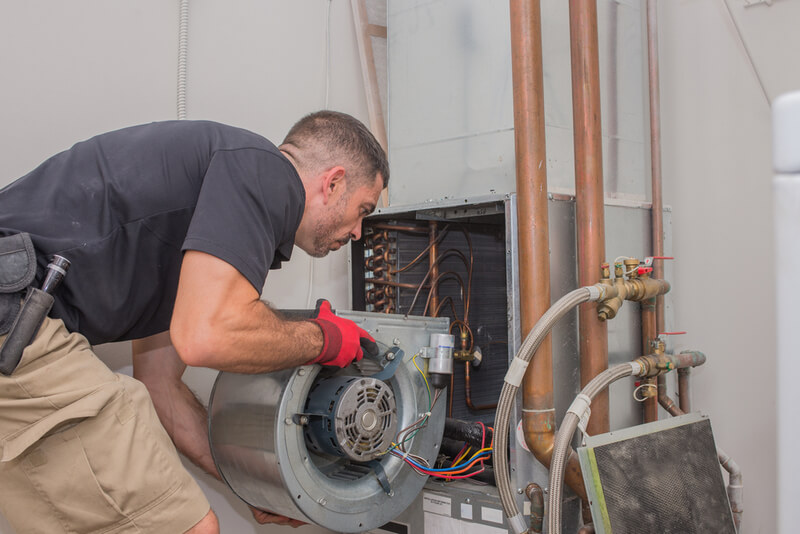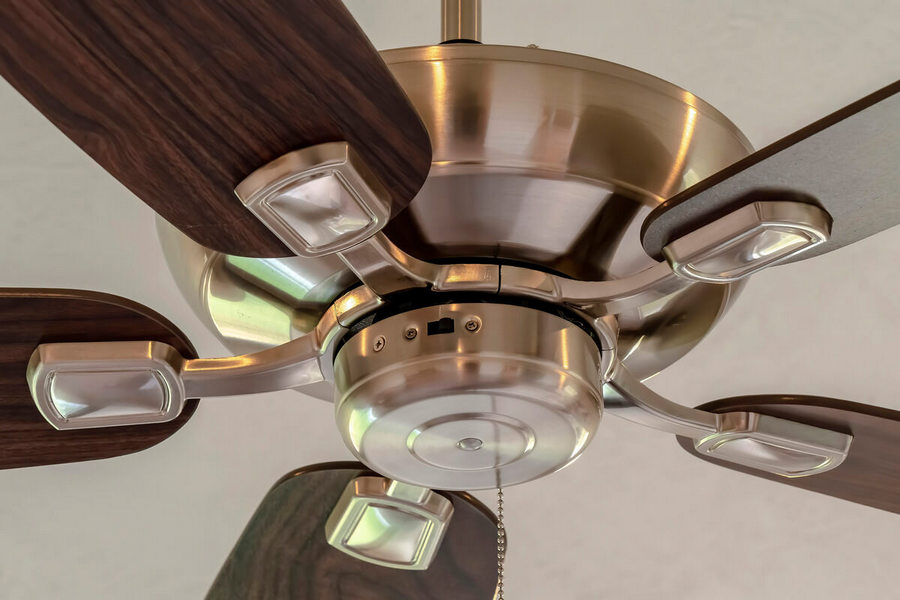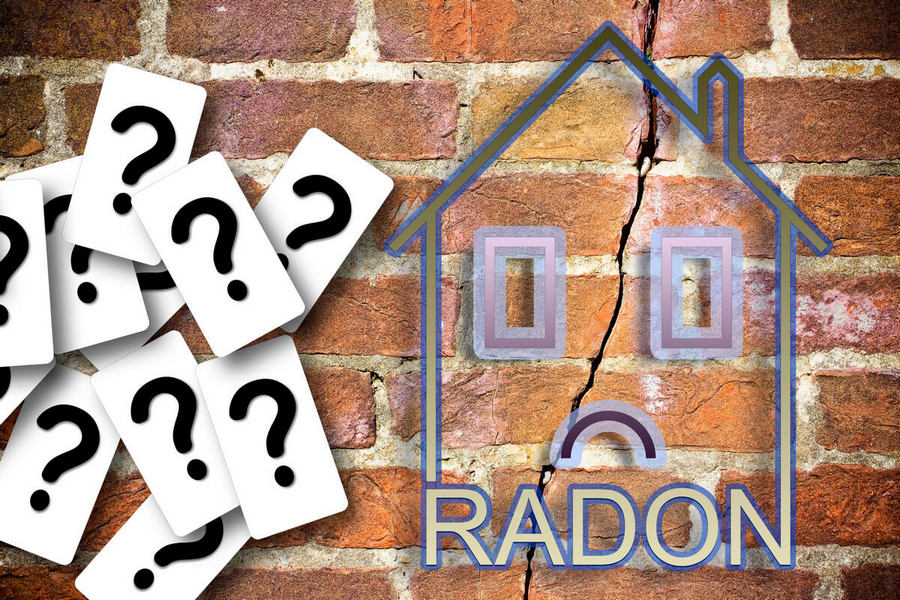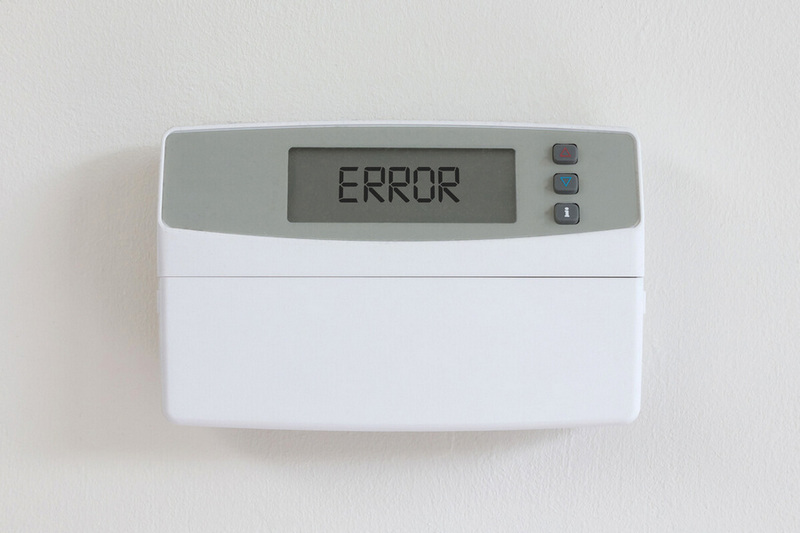An air handler or air handling unit (AHU) is an integral part of an HVAC system. An air handler is located indoors and is typically found in garages, attics, and basements.
While an air handler is a case unit that may look like a furnace, the two are not the same. It also works differently from an air conditioner.
So, how does an air handler work with air conditioners and gas furnaces? Read on to find out.
What Does an Air Handler Do?
An air handler works with the heating and cooling components of an HVAC system to deliver a controlled indoor climate to a home or office. An air handler assists in the regulation and circulation of indoor air. It circulates indoor air at a specific temperature set on the thermostat or control system.
An air handling unit coordinates with the ductwork of an HVAC system to simultaneously create a recurring cycle. It delivers air out to your rooms through supply vents and draws air in through return vents.
Main Components of an Air Handler
Evaporator Coil
Also known as the indoor coil, the evaporator coil contains refrigerant gas. This coil cools the air that passes over it by absorbing excess heat.
Blower
The blower propels regulated air to the connected ductwork and circulates it into the rooms or living areas of your home.
Air Filter
The air filter sits between the blower and the return air vent. It traps airborne dust contaminants from the air that is drawn into the HVAC system.
What Is the Difference Between Air Conditioner and Air Handler?
An air conditioner removes heat from a room and delivers cool air. An air handler does not perform the same function as an air conditioner. Instead, it works with your air conditioner to distribute cool air around your home.
The confusion surrounding air handling units and air conditioners arises from the fact that the AHU also contains coils. It may be the reason why some people think they are the same.
Air Handler Versus a Furnace: What’s the Difference?
A furnace generates heat by burning fuel such as oil or gas. Some furnaces have electric heating coils that generate heat.
The blower fan in the furnace unit moves air through the entire heating system and around your home. It draws air, forces it through the heat exchanger, and propels it back out again.
Air handlers function the same as furnaces in a way that they distribute or circulate warm air but they generally don’t generate heat on their own.
When Should You Replace Your Air Handler?
You must replace your air handler when it has seen better days. Old components may no longer perform the way they used to. Over time, an air handler loses its effectiveness to filter out contaminants.
Faulty, old air handlers may also cause your energy bills to skyrocket. Besides, units that are 10-15 years old need to be replaced according to the U.S. Department of Energy.
Another reason to replace your AHU is when there are better high-efficiency units on the market. Upgrading to the latest version helps improve the performance of your HVAC system. It also helps in maintaining your energy consumption at a minimum.
Crucial Things to Consider When Installing an Air Handler
Match Air Handling Unit with Your Central Air System
Proper pairing of your air handler and HVAC system is essential to improve air conditioning system performance. Efficiency ratings are often based on the performance of properly paired split systems. Ask your HVAC technician about an AHRI Certified Reference Number or an AHRI Certificate of Product Ratings.
If the outdoor component of your split system is a heat pump, your indoor component is most likely an air handler. The latter will efficiently circulate conditioned air through your home’s ductwork if your heat pump’s capacity and Seasonal Energy Efficiency Ratio (SEER) are properly matched.
Further, improperly matched systems are found to be less efficient than matched systems. This is something homeowners need to keep in mind when considering replacing only the outdoor component of their split system.
Replace Air Handler and HVAC System at the Same Time
In a split system, it would be wise to replace both the indoor and outdoor components at the same time. This way, there’s a higher chance that both units will have similar warranties, which can be beneficial for homeowners like you.
Choose the Right Location
Garages, attics, and basements are the ideal areas of your home to install an air handler. Dedicated closets can also be a good spot for an air handler. Whatever the location is, make sure the area is well-ventilated, or there’s no condensation or humidity.
Final Thoughts
An air handler works with the heating and controlling unit to send temperature-regulated air to the different ducts of your home’s ventilation system. The filters in air handlers trap dirt and pollutants as regulated air passes through the ducts.
An air handler unit improves indoor air quality, making your air conditioner perform more efficiently. Just make sure to properly pair your unit with the HVAC system.







